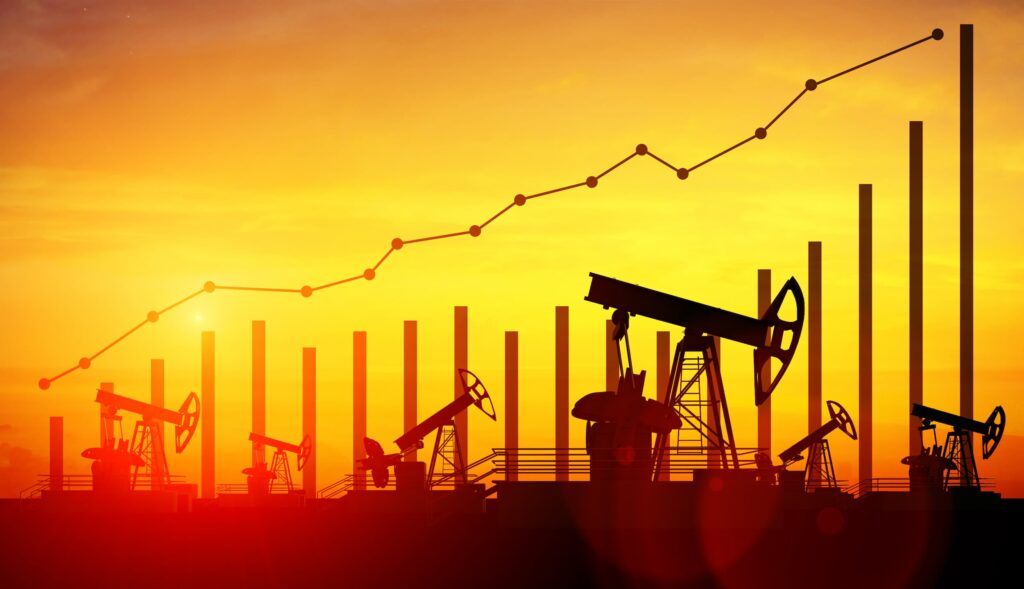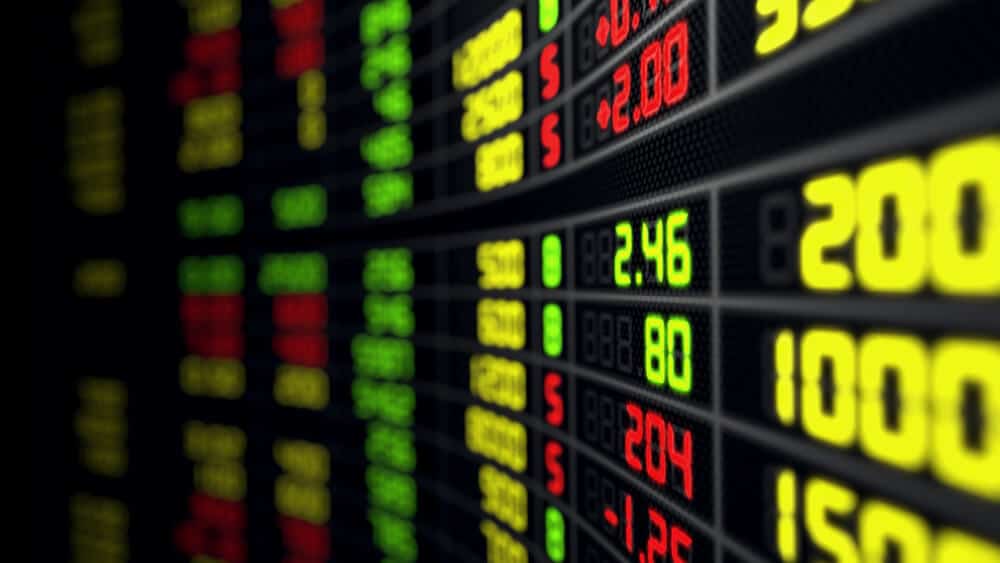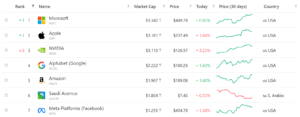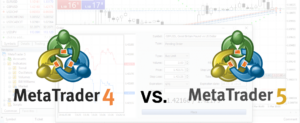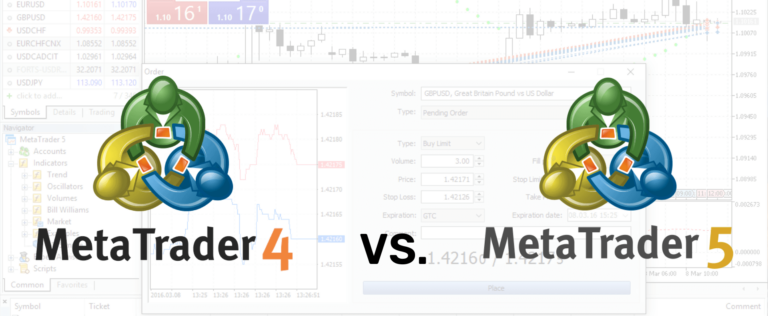Oil is a commodity, and a commodity is a good that is characterised by a lack of significant differentiation between the goods supplied by any supplier. It is not an exaggeration to say that oil is the most important good to the modern global economy and so, as a trader, it is important to understand key features of oil and oil markets when putting together an oil trading strategy and as an investor when building a diversified portfolio, in order to reap maximum returns.
Table of Contents:
History of Oil
Oil was first discovered in 600 B.C., but really became the essential commodity it was today in the 19th century. Originally used as a substitute for coal, as technology progressed over time, oil was cemented as the most popular energy source due to increased demand stemming from increased car ownership and electricity use. Initially, in the 20th century, oil production was predominantly controlled by ‘The Seven Sisters’, a cartel of oil companies comprised of Exxon, Shell, BP, Mobil, Texaco, Gulf, and Chevron. However, since the mid-20th century, the power balance in the industry has changed drastically. The Seven Sisters operated in many oil-producing countries around the world, but the governments of these countries felt that they were being exploited for their natural resources.
They then formed the cartel OPEC (Organization of the Petroleum Exporting Countries) in 1960 with notable current members, including Venezuela, Saudi Arabia, and the United Arab Emirates. Today OPEC holds less power than it once did due to advancements in refining processes. Today, the countries with the most oil reserves are Venezuela, Canada, and Saudi Arabia.

Trading Oil
The large volume and greater frequency of oil transactions mean that trends in the oil market are easier to predict. A significant amount of trading in the oil market is done through futures contracts. These are contracts where a buyer agrees to buy a set quantity of oil at a certain price in the future, absorbing the risk of the holder of this oil in the present in an attempt to generate a profit (hoping that the market price of oil when the contract is enacted is greater than the price the buyer bought it for). Traders in the oil market also trade options contracts (futures without an obligation). There are potentially an infinite number of factors that will affect the oil price and the oil market, so it is impossible to perfectly predict the future price of oil, however, we will discuss key factors below so that you can attempt to diversify your portfolio knowledgeably.
What Impacts the Oil Price?
Demand
You should be aware that demand for a good affects its price, and oil demand may constitute 98 million barrels a day in 2023. Due to the worlds widespread reliance on oil, the demand for oil is going to be relatively price inelastic i.e. if the price rises demand will not fall by as much, proportionally. Demand tends to increase in the ‘boom’ period of the economic cycle and falls in the ‘bust’ period of the economic cycle. For example, during the COVID-19 pandemic, demand for oil fell to historic lows and OPEC had to rapidly scramble to stabilise prices, despite this the oil price fell to a 20-year low.
Supply
As a trader, you should also be aware of how supply affects the oil price and what affects the supply of oil. Oil production is predicted to be slightly higher than demand in 2023 at 101 million barrels per day. However, there has been a downward trend in oil discovery and new reserves since the beginning of the 2010s due to falling oil prices not providing as much of an incentive.
Sentiment
There are two broad types of traders that will trade in the oil derivatives market: hedgers and speculators. Hedgers buy futures and options contracts to shield themselves against possible higher oil prices in the future. Speculators are those who buy futures and options contracts in an attempt to make a profit. It is important to understand how sentiment may affect these buyers with completely different goals the same. For example, if a hedger’s sentiment is that the price will rise drastically, they are likely to buy a futures contract to shield themselves from the risk of having to pay higher prices in the future. However, if the speculator’s sentiment is that the price will rise drastically, they are likely to purchase a futures contract so that they can then sell oil down the line for a higher price. It is worth noting that sentiment can cause drastic changes in the price in and of itself.
Commodity Price Cycle
Looking at the history of oil (but do note that what has happened before is not guaranteed to happen again), there seems to be an approximately 29-year commodity price cycle where the commodity price index reaches a peak every 29 years or so.
Geopolitical factors
We have touched briefly on geopolitical factors that may affect the oil price, most notably, we have considered how OPEC affects the oil price, but there are other geopolitical factors as well. For example, the Russian invasion of Ukraine caused oil prices to increase dramatically, with the EU being massively dependent on Russian oil. Therefore, national and regional geopolitical factors have the capacity to affect oil prices around the globe.
US Dollar

Another key factor to consider when trading oil is the strength of the US dollar. All oil prices are quoted in US dollars which will, in itself, affect the price of oil. Historically, when the US dollar strengthened, the price of oil is lower in dollar terms and vice versa. However, the relationship between the US dollar and the oil price is becoming more unstable due to the US’ increase production of oil. This is because the US has become a net exporter of oil.
Therefore, the US trade deficit is positively affected by rising oil prices which may have a positive effect on the US exchange rate. This competes with the effect of the cost of a barrel of oil decreasing as the US dollar improves, hence why the relationship has become more unstable in recent years.
Inflation
It is important when trading oil to be aware of the relationship between the oil price and inflation. As the price of oil rises, with oil being used as an input in many goods, inflation will rise. This was a significant issue in the past, more so than today, as oil is relatively less dependent on than it is today. This is worth considering as a trader/investor when diversifying your portfolio.
Oil Trading Takeaways
You should now have a better understanding of what oil is, why it is beneficial to trade oil, and key factors that will affect how you trade oil. A key takeaway is that understanding the core drivers of price fluctuations and the risks and benefits of trading in oil will allow you to further develop your trading strategy and for investors to diversify your portfolio with assets that have significant potential of returns. So come trade Oil with Hantec Markets!

